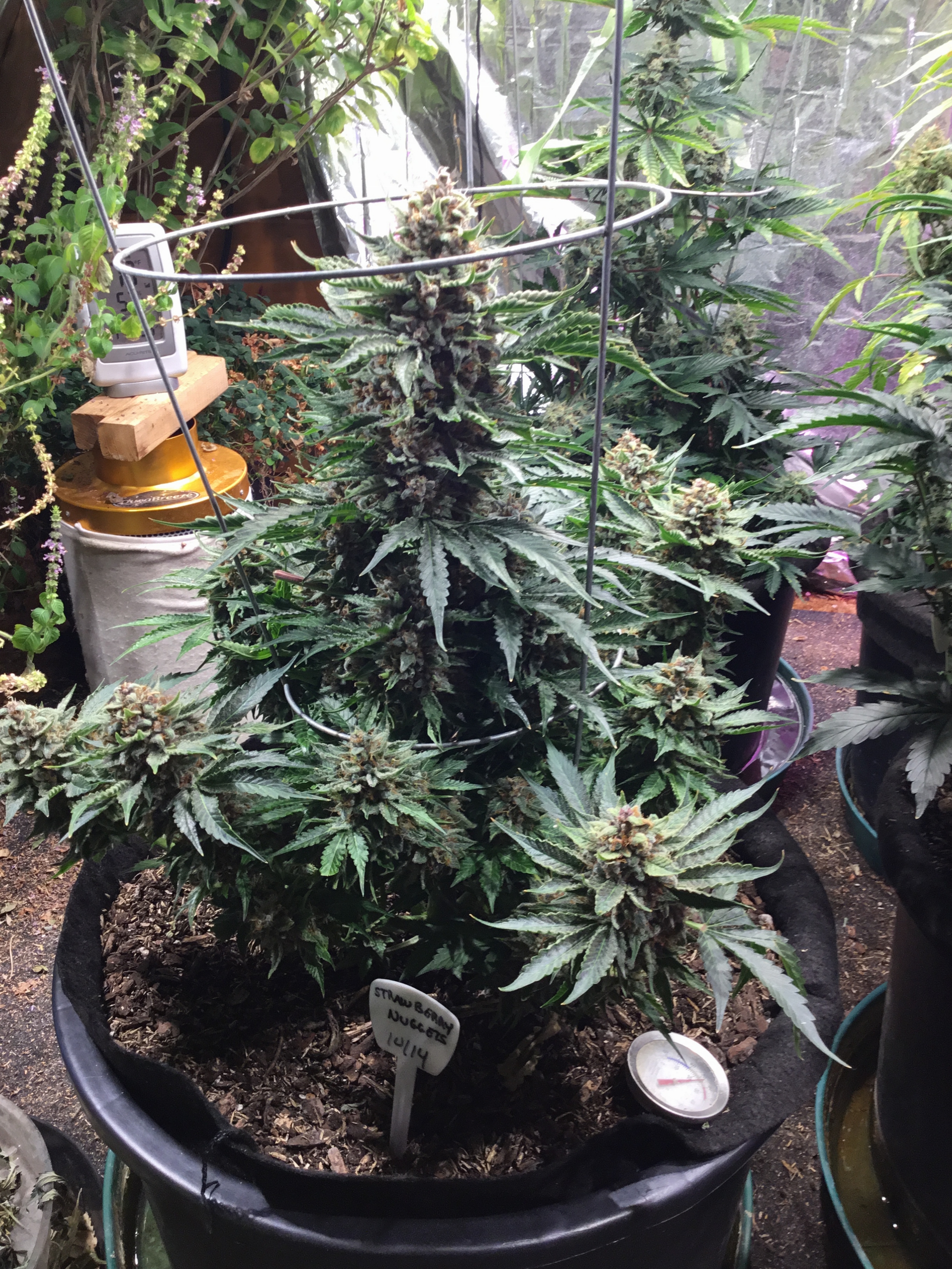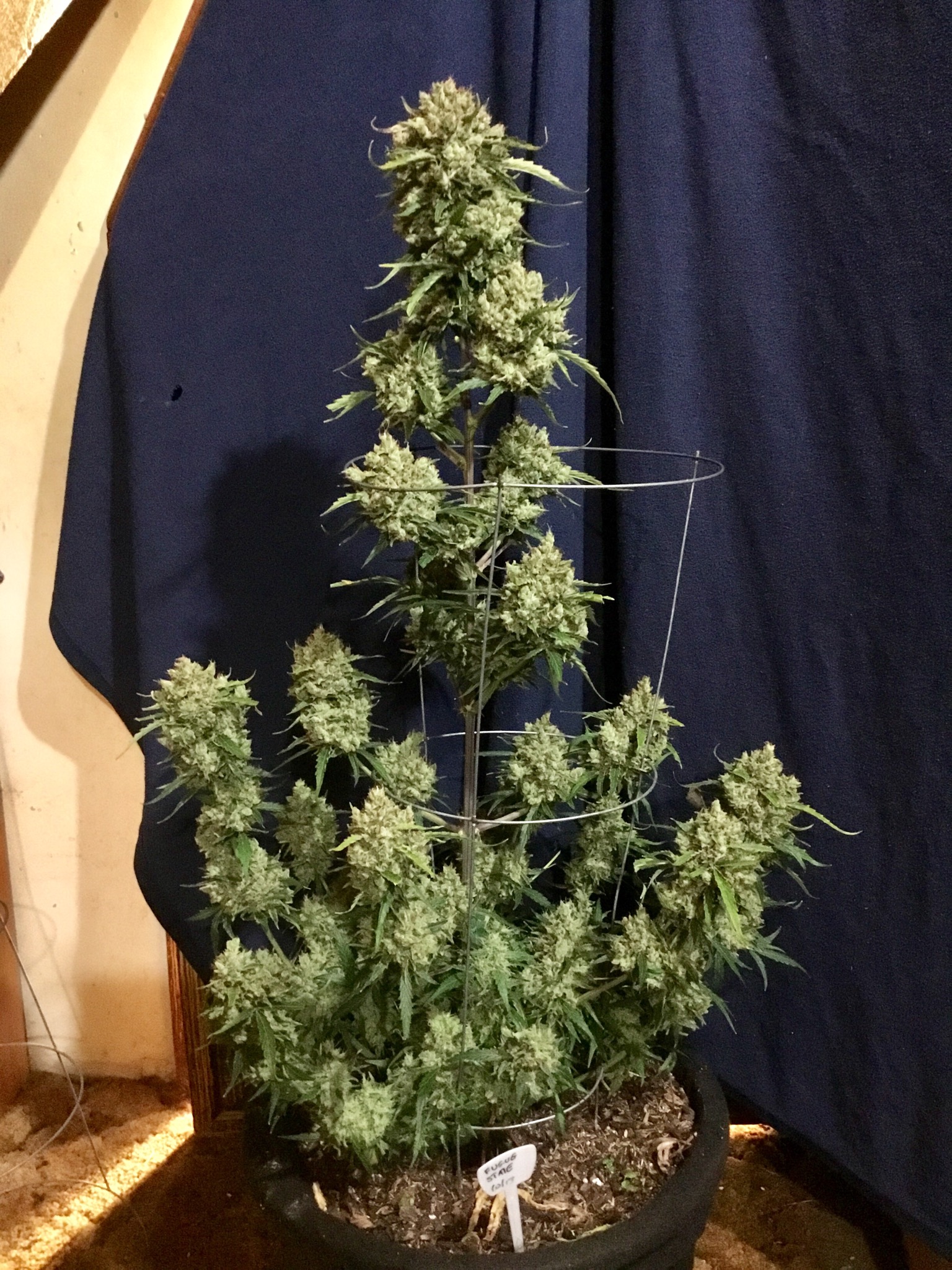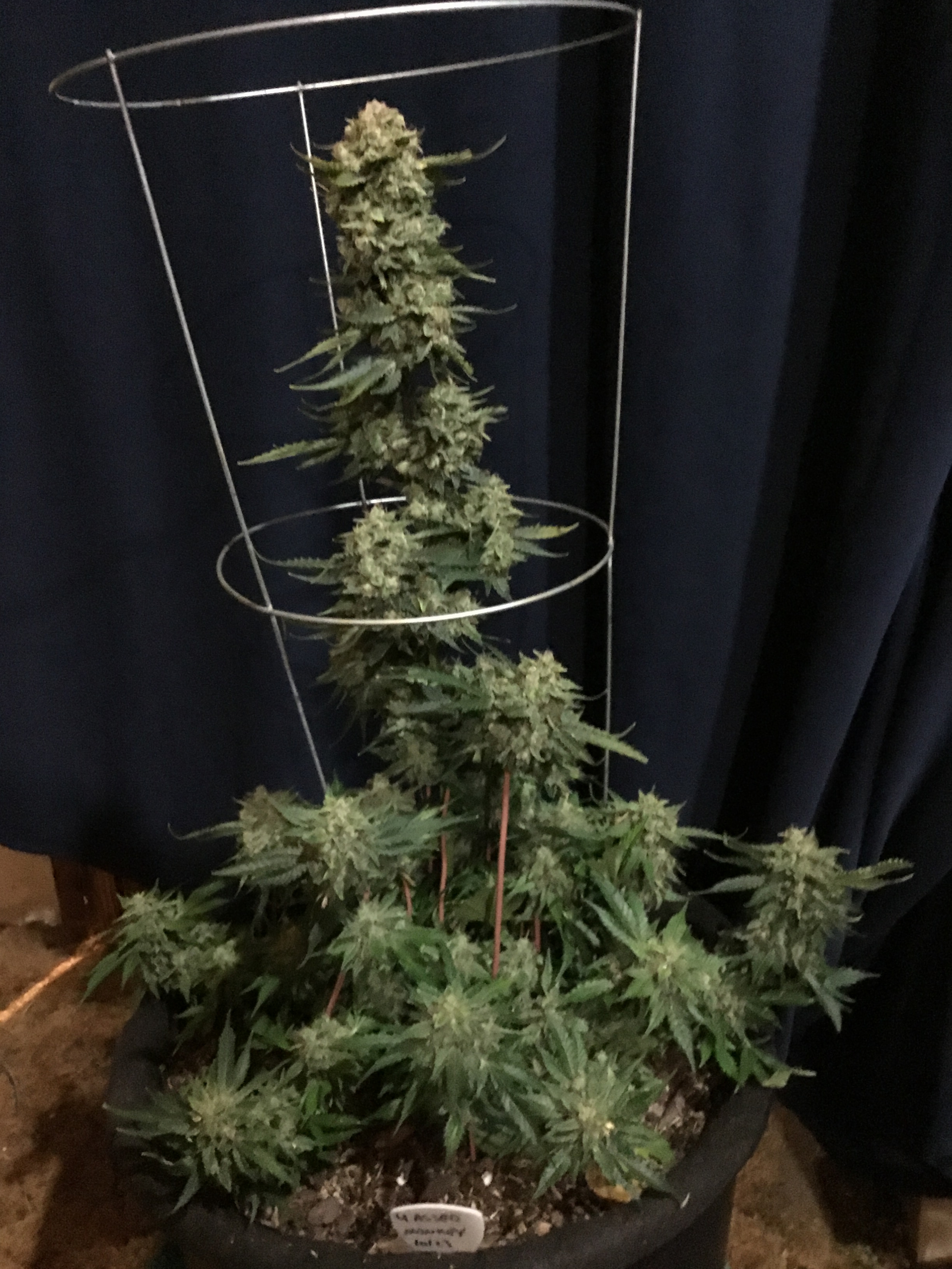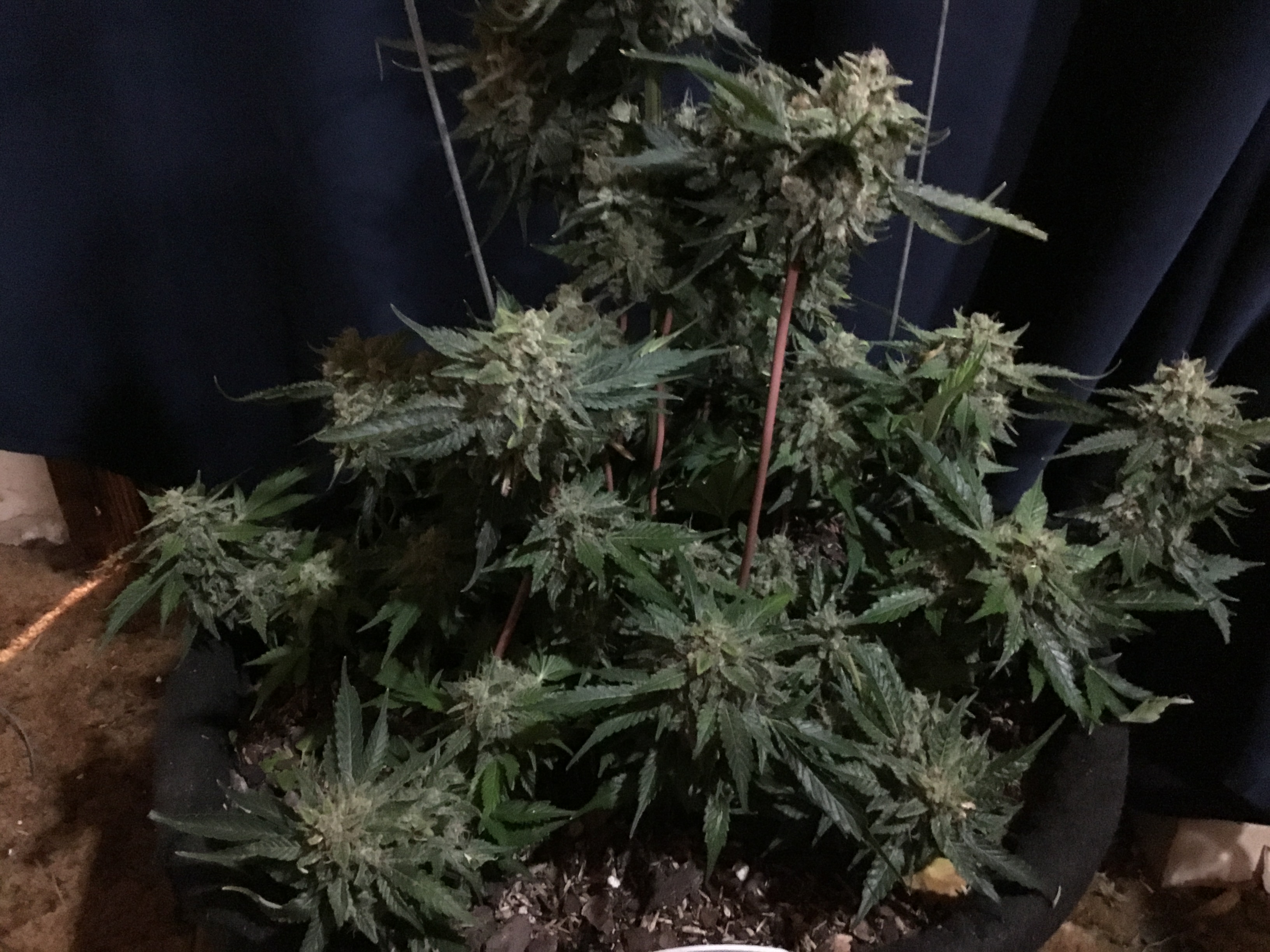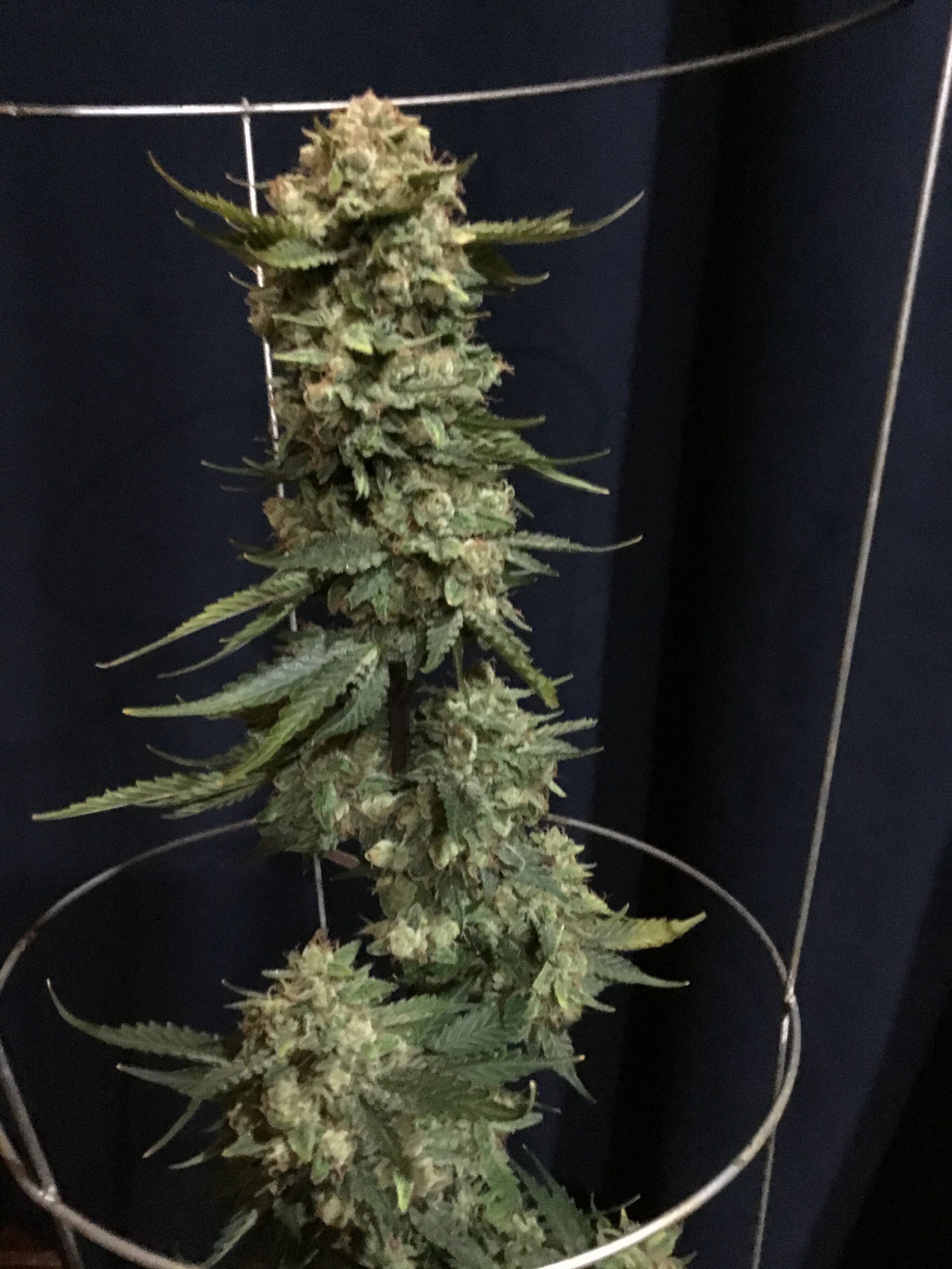I thought I would write a little about my grow style and tech. I am currently doing what I call the "Green Sea of Change". I am running six MG strains at a time, all staggered. I have a few that have finished, and six more in the works.
I grow organic, and am into soil building. I am a typical gardener, with a yard, garden, etc. I grow canna the same basic way I do everything else.
I make my own leaf mold to use instead of sphagnum peat moss in my soil mixes. All the leaves I gather are pesticide free, and some of the finest varieties to collect. Aspen/cottonwoods, alder, willow, and birch.
I also make my own compost for use in my soil mixes. I collect dandelions, clover, horsetail, and other garden/ yard waste to go with leaves. This might sound like a lot of work, but it is stuff I have to do to maintain my yards and gardens anyway, I just make bins and horde stuff. I also like to add some alfalfa and chicken manure if I can.
I like worms. I maintain extremely large populations of worms in my leaf mold, and compost that is done cooking. I use these two items in the production of 'Vermicompost" or 'VMC' for short. 'VMC' is compost that has been heavily worked by worms. Its a little different than straight Earthworm Castings or 'EWC', in that it is created from compost (or leaf mold), and the compost is still part of the finished product, unlike EWC that is usually separated castings only. I have a 'goto' mix for making vmc, that I have been using for years in various styles of worm bins. If anyone wants to hear more about how I make VMC, I would be happy to go into great detail.
I mostly grow "No till" style, with soil recycling incorporated into the initial mix. I use 10 gallon containers. This is pretty minimal in size for what I do, but I make it work. I exclusively use an unconventional potting scheme that utilizes wicking. What I do is start with an empty 10 gallon hard sided plastic nursery pot and a saucer. In the nursery pot, I place a few inches of landscaping lava rock. I have best results if I drive over the bag of lava rock with my truck, before I place it in the bottom of the nursery pot. On top of the lava rock goes a 10 gallon round smart pot. I roll the top edge of the smart pot around the top edge of the nursery pot. This roll, keeps the smart pot from sagging down into the nursery pot. The lava rock wicks moisture to the smart pot. A lot of folks use perlite for this, the lava rock works better with my mix in the long run. The smart pot is then filled with soil. I reserve an empty spot at the top, center for some seed starter. I plant seeds directly into this final container.
I basically use just tap water throughout the grow. I use a couple teas a couple times. Usually a kelp tea, a couple times, a kelp/ alfalfa tea a couple times, a sprouted corn tea once, and a malted barley tea once or twice. The teas are simple. 1 Tablespoon of an ingredient, to a gallon of water. Let sit 24-48 hours and use.
I also spray around a lot of aloe water. The seedlings and young plants love it. Its also great for moistening seed starter.
I mulch my containers very heavily. This the key to making things work in the longterm.
In my grow room, I use cob lights. Each plant has a 50 watt cob overhead, and a 40 watt cob as an angled side light. In veg I mostly use just an overhead cob.
I like to grow plants in 'Tomato cages' in a fairly natural style. I leaf tuck and branch tuck, but nothing extraordinary.
That's an intro into my style, and my program.
So far I have harvested and dried and jarred my first 3 MG plants.
Strain: Strawberry Nuggets
Grow Method: Homemade no till soil
Lights: 50 watt COB + 40 watt COB
Height: 16" Tall
Yield: 103 grams dry and cured
Harvest day: 73 from seedling emergence
Strain: Fugue State
Grow Method: Homemade no till soil
Lights: 50 watt COB + 40 watt COB
Height: 38" Tall
Yield: 223 grams dry and cured
Harvest day: 78 from seedling emergence
Strain: 4Assed Monkey
Grow Method: Homemade no till soil
Lights: 50 watt COB + 40 watt COB
Height: 24" Tall
Yield: 104 grams dry and cured
Harvest day: 76 from seedling emergence
I need to get a camera with a flash so I can really show off the frost levels on these things. The ipad doesn't do them justice.
Coming up in the rotation currently, I have a 'Forum Stomper', 'Fantasmo Express', 'Sour Stomper', 'Deez Nuggz', 'Port and Stilton', and an 'Auto Livers'. They are all staggered.
Every couple weeks I should have another one finishing, and another one started back in the same spot the same day.
Cheers
os
I grow organic, and am into soil building. I am a typical gardener, with a yard, garden, etc. I grow canna the same basic way I do everything else.
I make my own leaf mold to use instead of sphagnum peat moss in my soil mixes. All the leaves I gather are pesticide free, and some of the finest varieties to collect. Aspen/cottonwoods, alder, willow, and birch.
I also make my own compost for use in my soil mixes. I collect dandelions, clover, horsetail, and other garden/ yard waste to go with leaves. This might sound like a lot of work, but it is stuff I have to do to maintain my yards and gardens anyway, I just make bins and horde stuff. I also like to add some alfalfa and chicken manure if I can.
I like worms. I maintain extremely large populations of worms in my leaf mold, and compost that is done cooking. I use these two items in the production of 'Vermicompost" or 'VMC' for short. 'VMC' is compost that has been heavily worked by worms. Its a little different than straight Earthworm Castings or 'EWC', in that it is created from compost (or leaf mold), and the compost is still part of the finished product, unlike EWC that is usually separated castings only. I have a 'goto' mix for making vmc, that I have been using for years in various styles of worm bins. If anyone wants to hear more about how I make VMC, I would be happy to go into great detail.
I mostly grow "No till" style, with soil recycling incorporated into the initial mix. I use 10 gallon containers. This is pretty minimal in size for what I do, but I make it work. I exclusively use an unconventional potting scheme that utilizes wicking. What I do is start with an empty 10 gallon hard sided plastic nursery pot and a saucer. In the nursery pot, I place a few inches of landscaping lava rock. I have best results if I drive over the bag of lava rock with my truck, before I place it in the bottom of the nursery pot. On top of the lava rock goes a 10 gallon round smart pot. I roll the top edge of the smart pot around the top edge of the nursery pot. This roll, keeps the smart pot from sagging down into the nursery pot. The lava rock wicks moisture to the smart pot. A lot of folks use perlite for this, the lava rock works better with my mix in the long run. The smart pot is then filled with soil. I reserve an empty spot at the top, center for some seed starter. I plant seeds directly into this final container.
I basically use just tap water throughout the grow. I use a couple teas a couple times. Usually a kelp tea, a couple times, a kelp/ alfalfa tea a couple times, a sprouted corn tea once, and a malted barley tea once or twice. The teas are simple. 1 Tablespoon of an ingredient, to a gallon of water. Let sit 24-48 hours and use.
I also spray around a lot of aloe water. The seedlings and young plants love it. Its also great for moistening seed starter.
I mulch my containers very heavily. This the key to making things work in the longterm.
In my grow room, I use cob lights. Each plant has a 50 watt cob overhead, and a 40 watt cob as an angled side light. In veg I mostly use just an overhead cob.
I like to grow plants in 'Tomato cages' in a fairly natural style. I leaf tuck and branch tuck, but nothing extraordinary.
That's an intro into my style, and my program.
So far I have harvested and dried and jarred my first 3 MG plants.
Strain: Strawberry Nuggets
Grow Method: Homemade no till soil
Lights: 50 watt COB + 40 watt COB
Height: 16" Tall
Yield: 103 grams dry and cured
Harvest day: 73 from seedling emergence
Strain: Fugue State
Grow Method: Homemade no till soil
Lights: 50 watt COB + 40 watt COB
Height: 38" Tall
Yield: 223 grams dry and cured
Harvest day: 78 from seedling emergence
Strain: 4Assed Monkey
Grow Method: Homemade no till soil
Lights: 50 watt COB + 40 watt COB
Height: 24" Tall
Yield: 104 grams dry and cured
Harvest day: 76 from seedling emergence
I need to get a camera with a flash so I can really show off the frost levels on these things. The ipad doesn't do them justice.
Coming up in the rotation currently, I have a 'Forum Stomper', 'Fantasmo Express', 'Sour Stomper', 'Deez Nuggz', 'Port and Stilton', and an 'Auto Livers'. They are all staggered.
Every couple weeks I should have another one finishing, and another one started back in the same spot the same day.
Cheers
os

